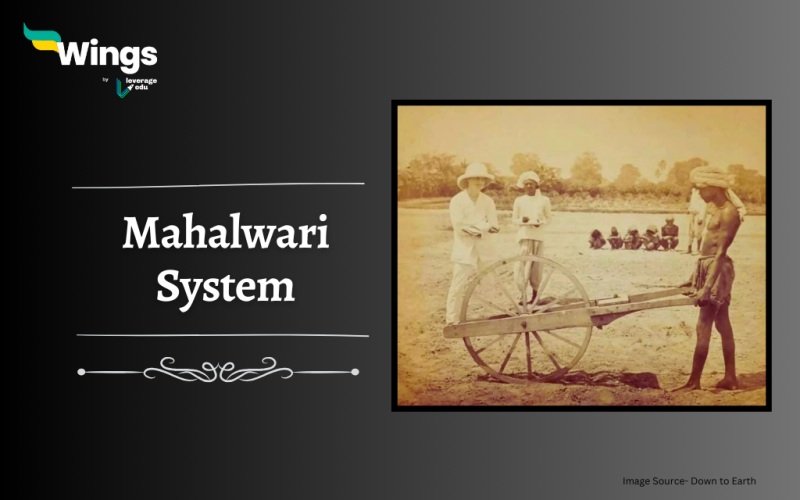The Mahalwari System was born during the British colonial era. This unique land revenue system left an unforgettable mark on the Indian countryside, shaping the lives of countless farmers and communities. Join us on a journey through time as we explore the Mahalwari System, its origins, workings, and its lasting impact on the Indian subcontinent.
Table of Contents
The Basics of the Mahalwari System
The Mahalwari system was a land revenue settlement system introduced by the British in India in the early 19th century. The new system in India was introduced and implemented by Holt Mackenzie in the year 1822 and it was again reviewed under Lord William Bentinck in the year 1833. This had elements of both the Zamindari and the Ryotwari systems.
At its core, the system was a land revenue collection method that involved grouping villages into revenue units known as “mahals.”, which meant peasants. These mahals were typically a cluster of villages, and the land revenue was assessed and collected collectively from the landowners within the mahal.
Under the system, the village was the basic unit of administration. The village headman, or Pradhan, was responsible for collecting land revenue from the farmers on behalf of the government. The revenue was assessed on the basis of the quality of the land, the area cultivated, and the type of crops grown.
Also Read – What was thе Pеrmanеnt Sеttlеmеnt or Zamindari Systеm?
Key Features of the Mahalwari System
1. Collective Responsibility: One of the defining features of the Mahalwari System was the concept of collective responsibility. This encouraged villagers to work together for the common good.
2. Fixed Revenue Demand: Unlike the earlier systems where revenue demands were often arbitrary and subject to change, the Mahalwari System introduced fixed revenue demands for a specific period. This provided stability and predictability for landowners.
3. Promotion of Landownership: The system encouraged individual landownership within the mahals, providing incentives for land improvement and investment.
Also Read – When did Agriculture Begin: A Timeline
Provinces under the System
The Mahalwari system was implemented in the provinces like North-West Frontier Province, Agra, Punjab, the Gangetic Valley, and the Central Provinces. It was a more equitable system than the Zamindari system, as it did not create a class of landlords. The state share of the revenue was 66% of the rental value. The settlement was agreed upon for 30 years.
However, it was a complex system, but it also helped to promote a sense of community among the villagers.
Also Read – The Invention of Wheel: Discoverer, History, Facts
Impacts on Agriculture
While the Mahalwari System had its merits, it also had its fair share of drawbacks. The fixed land revenue demands often led to over-assessment, leaving many landowners struggling to meet their tax obligations. This, in turn, had adverse effects on agricultural practices, as farmers were often left with little surplus for investment in their farms.
Also Read: Ryotwari System: About India’s Agricultural Past
Problems with the Mahalwari System
There were numerous issues associated with the Mahalwari System. Here are a few of them:
- It is believed that this land revenue system measures land on sole assumptions which creates problems for the farmers.
- The Mahalwari System increased the overall rate of corruption in the country.
- The system was rigid and left no scope for flexibility for the farmers who were forced to pay taxes even during natural calamities.
- There were times when the company spent more on collecting the revenue than the total amount of collection.
- Contrary to popular belief, the Mahalwari System offered no real benefit to farmers and peasants.
Consequences of the British Land Revenue Systems
- Land revenue systems introduced by the British government turned land into a commodity.
- This led to private ownership of land which was almost nonexistent during the pre-british era in India.
- To cope with the increase in unjustified taxes, farmers started growing cash crops. This led to a shortage of food grains and unanticipated famines.
- The British land revenue systems also gave rise to bonded laborers since poor farmers were unable to pay back hefty loan amounts.
Legacy and Transformation
The Mahalwari System’s legacy endured even after India gained independence in 1947. The system was gradually replaced with other land revenue methods, but its influence on local governance and community dynamics remained. In many ways, the principles of collective responsibility and participatory governance from the system live on in contemporary rural India.
The Mahalwari System was a systematic structure and amalgamation of tradition, governance, and agrarian economics that shaped the lives of countless Indians for nearly a century. While it had its share of challenges, it also gave a sense of community and local autonomy that left an enduring legacy.
Relevant Blogs
We hope you liked our blog. If you want to read more articles like this, you can get Study notes on the Modern History of India here. Also, you can visit our general knowledge page on Indian History!
 One app for all your study abroad needs
One app for all your study abroad needs













